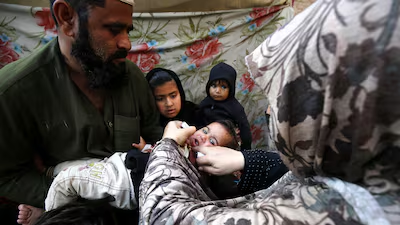
A health worker administers polio vaccine drops to a child during a door-to-door vaccination campaign, in Peshawar, Pakistan. EPA
A health worker administers polio vaccine drops to a child during a door-to-door vaccination campaign, in Peshawar, Pakistan. EPA
Polio 'is cornered' in Pakistan and Afghanistan amid global drive to wipe out virus
Concerted efforts to eradicate the highly contagious disease have proven successful, but experts warn the fight is not yet won

